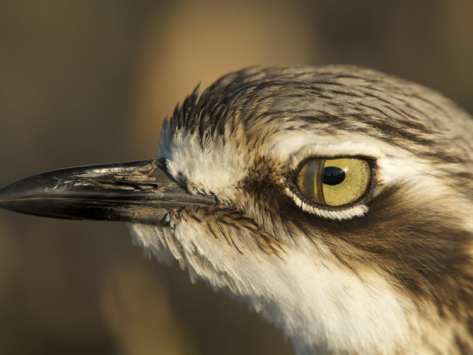Nictitating membrane
The nictitating membrane ( plica semilunaris conjunctivae, membrane nicitans ) or " third eyelid " ( palpebra tertia ) is an additional conjunctival fold in the nasal canthus. In humans and most primates - an exception is the Ordinary Bärenmaki - it is only rudimentary. In many other vertebrates, it is transparent and can be folded as safety glasses to his eyes.
Construction
The nictitating membrane consists of a layer of self, is the T-shaped Blinzknorpel ( cartilage palpebrae III) embedded. The intrinsic layer is covered with a multilayered epithelium with goblet cells. In the mucosa of the nictitating membrane are numerous lymphoid follicles.
Are in the nictitating membrane, tierartlich different glands embedded representing additional lacrimal glands. The superficial nictitating membrane gland (glandula palpebrae tertiae superficialis ) is located at the nose-side crossbar of Blinzknorpels. The deep nictitating membrane gland (glandula palpebrae tertiae profunda ) - also known as Harder 's gland - does not occur in all animals. Pronounced it is, for example, in rodents, cattle and pigs. The nictitating membrane glands produce together with the actual lacrimal gland, the middle layer of the tear film.
The nictitating membrane has in many vertebrates embedded muscle fibers that can actively move the third eyelid horizontally across the cornea. In most mammals, the nictitating membrane is rudimentary muscles, an exception cats dar. In the animals without nictitating membrane muscles causes retraction of the eyeball ( enophthalmos ) to a passive forward displacement of the nictitating membrane. This state of affairs makes you look even at the investigation of the nictitating membrane advantage: by gently pressing the eyeball through the eyelid through the nictitating membrane is advanced.
Function
The nictitating membrane protects such as safety glasses, the cornea from mechanical influences and can be like a windshield wiper used for the removal of foreign bodies. In birds it is probably in flight, shifted in some aquatic animals ( beavers, manatees ) during the dive before the cornea. In other aquatic mammals such as sea lions, however, it is only used in the country stay and prevents the ingress of dust grains. For polar bears, the nictitating membrane acts like a Snow glasses and protects against snow blindness.
In birds, two muscles are in the nictitating membrane embedded, the musculus quadratus membranae nicitantis and the musculus pyramidalis membranae nicitantis. They allow an active blink of the nictitating membrane, which in birds a greater role for the distribution of the tear fluid plays than the actual eyelids. In the domestic fowl the nictitating membrane performs about 35 blinks per minute.
Diseases
A pathological event of the nictitating membrane is observed in a enophthalmos, as observed for example in Tetanus. Also poisoning, Horner 's syndrome, Feline dysautonomia, cachexia, phthisis bulbi, conjunctivitis and Haw 's syndrome can lead to a nictitating membrane.
A hypertrophy of the lymphoid follicles ( follicular conjunctivitis ) on the corneal side surface of the nictitating membrane is relatively common in young dogs. The enlarged lymph follicles then act like a grater plate and lead to mechanical irritation of the cornea.
The Blinzknorpeleversion is a bend of the Blinzknorpels. When Nick skin glands incident there is a prolapse of the third eyelid gland. Both diseases are usually managed surgically.









